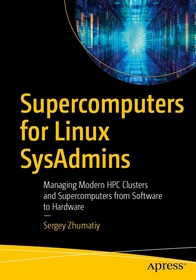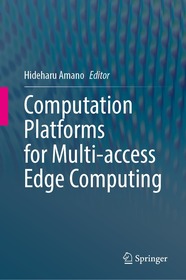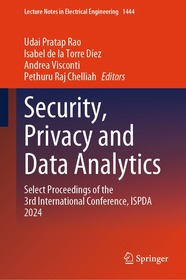
Supercomputers for Linux SysAdmins
Managing Modern HPC Clusters and Supercomputers from Software to Hardware
- Publisher's listprice EUR 53.49
-
22 184 Ft (21 128 Ft + 5% VAT)
The price is estimated because at the time of ordering we do not know what conversion rates will apply to HUF / product currency when the book arrives. In case HUF is weaker, the price increases slightly, in case HUF is stronger, the price goes lower slightly.
- Discount 12% (cc. 2 662 Ft off)
- Discounted price 19 522 Ft (18 593 Ft + 5% VAT)
Subcribe now and take benefit of a favourable price.
Subscribe
22 184 Ft

Availability
Not yet published.
Why don't you give exact delivery time?
Delivery time is estimated on our previous experiences. We give estimations only, because we order from outside Hungary, and the delivery time mainly depends on how quickly the publisher supplies the book. Faster or slower deliveries both happen, but we do our best to supply as quickly as possible.
Product details:
- Edition number First Edition
- Publisher Apress
- Date of Publication 24 October 2025
- Number of Volumes 1 pieces, Book
- ISBN 9798868815997
- Binding Paperback
- No. of pages470 pages
- Size 254x178 mm
- Language English
- Illustrations XXV, 470 p. 18 illus. 700
Categories
Long description:
"
Supercomputers and High Performance Computing (HPC) clusters are not so exotic as people imagine these days. They give companies the power of computation like no one server can give alone. They make new drugs and materials discoveries, universe modeling and AI training, crash simulations and market research possible – all thanks to HPC clusters. Building or renting a HPC cluster is not so difficult either as cloud providers can give you resources to build one cheap and performative enough to use yourself, so If you are or want to become HPC cluster Sysadmin or manager, this book is for you.
Supercomputers for Linux SysAdmins delves into the world of modern HPC cluster architecture, hardware, software and resources management using a Linux/UNIX based approach. The number of HPC clusters is growing with an estimated 30 billion by 2030 but there are not enough sysadmins to run and manage them, this book serves to bridge this gap to help more Sysadmins and managers to transition into the exiting world of HPCs.
This book helps those with a strong foundational knowledge in Linux, to deal with supercomputers and HPC clusters. We start with the basic principles of supercomputer management, fundamentals of Linux and UNIX, Shell Scripting and systemd and well as other open source tools and frameworks, taking you thorough the security, monitoring and hardware requirements for supercomputers and HPC clusters.
You Will Learn:
- How to plan new supercomputers
- The main principles and technologies used in supercomputers and HPC clusters
- How to set up the software environments on new supercomputers
- To set up supercomputer and HPC cluster resources and jobs management
- To manage accounts, resource sharing and many more.
Who is it for:
The main audience of this book are regular UNIX/Linux sysadmins and managers, who should deal with HPC clusters on-prem or in cloud and those who are interested in supercomputers and HPC clusters and how to utilize them in their projects and teams.
" MoreTable of Contents:
"
1: Introduction.- 2: What is ""super""?.- 3: How to build and start it?.- 4: Supercomputer Hardware.- Chapter 5: InfiniBand.- 6: How a supercomputer does the job.- 7: UNIX and Linux – the basics.- 8: UNIX and Linux – working techniques.- Chapter 9: Network File Systems.- Chapter 10: Remote Management.- 11: Users – Accounting, Management.- 12: Users – quotas, access rights.- 13: Job management systems.- 14: OpenPBS, Torque.- 15: Slurm.- 16: Containers.- 17: Clouds.- 18: Remote User Access.- 19: Cluster Status Monitoring Systems.- 20: Backup.- 21: Compilers and Environments, for Parallel Technologies.- 22: Parallel Computing Support Libraries.- 23. Booting and init.- 24: Node Setup, Software Installation.- 25: Out-of-the-box stacks and deployment systems.- 26: Cluster Management Systems – xCAT and others.- 27: Communicating with users.- 28: One-two-three instructions.- 29: Shell scripts – basics and common mistakes.- 30: Systemd – A Short Course.- 31. Conclusion.- Glossary.
" More










